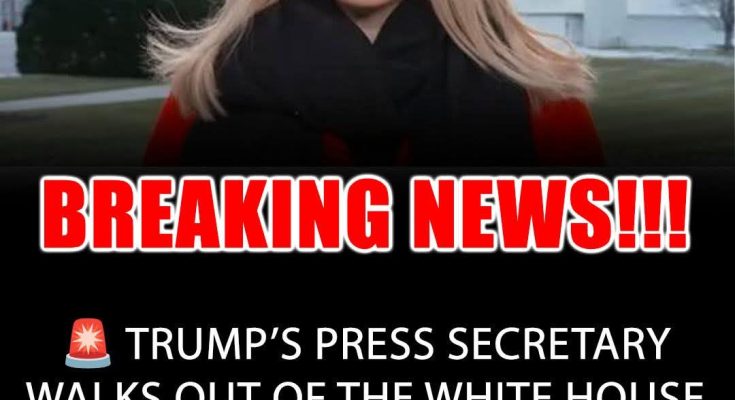In a move that has already ignited intense debate across the country, the federal government has unveiled a sweeping voluntary buyout program aimed at shrinking the federal workforce. Supporters hail the plan as a necessary cost-cutting measure in an era of budget deficits, while critics warn that it could hollow out crucial government services and erode institutional knowledge.
Announced late Friday by the Office of Personnel Management (OPM), the plan offers eligible federal employees a one-time lump-sum payment — reportedly up to $40,000 for long-tenured workers — if they agree to leave their jobs voluntarily within the next six months. According to administration officials, the initiative seeks to reduce payroll costs, modernize agencies, and open doors for “a new generation of federal talent.”
“This is about streamlining government and ensuring taxpayer dollars are spent responsibly,” said OPM Director Cynthia McGuire during a press briefing on Saturday. “We want to empower agencies to reallocate resources toward innovation and efficiency, not simply perpetuate outdated systems and bloated payrolls.”
A Plan to ‘Right-Size’ the Government
The program, internally referred to as the Federal Workforce Optimization Initiative, is expected to target agencies deemed “overstaffed” or operating with “redundant administrative functions.” Among those reportedly affected are the Department of Housing and Urban Development, the Department of Agriculture, and certain offices within the Department of Defense.
Administration officials project that at least 55,000 employees nationwide could take the buyouts, potentially saving the government billions of dollars over the next decade. “These savings will help fund infrastructure, education, and technological upgrades in federal agencies,” McGuire added.
However, not all agencies are on board. Several departments — particularly those in public health, environmental protection, and emergency management — have voiced concerns that losing seasoned staff could compromise their ability to respond to crises.
Union Backlash
The response from federal employee unions was swift and sharp. The American Federation of Government Employees (AFGE), the largest union representing federal workers, called the plan “short-sighted and destructive.”
“Offering buyouts in the name of efficiency is a misleading tactic that destabilizes our workforce,” said AFGE President Everett Johnson in a statement. “We cannot afford to lose the people who keep our food safe, our air clean, and our veterans cared for. This is not just a matter of jobs — it’s about the safety and well-being of the American people.”
Union leaders argue that the buyout program disproportionately targets older, more experienced employees whose expertise cannot be easily replaced. “You’re creating a brain drain in critical agencies,” Johnson warned.
Economic and Political Fallout
The economic implications of the buyout plan are still being assessed, but early projections suggest mixed results. Analysts at the nonpartisan Congressional Budget Office (CBO) estimate the program could save as much as $5 billion annually in payroll and benefits if participation rates meet targets. However, the initial payouts — totaling an estimated $2.2 billion in the first year — could offset some of the early savings.
Politically, the announcement has deepened partisan divides on Capitol Hill. Republican leaders have largely praised the effort as a fiscally responsible move to curb what they describe as “excessive bureaucracy.”
“This is a step toward leaner, more accountable government,” said Senator Mark Reynolds (R-TX). “We’ve been talking for years about waste in Washington, and this plan finally delivers a solution.”
Democrats, meanwhile, accuse the administration of undermining essential services and pursuing austerity at the expense of public welfare. Senator Linda Ortiz (D-NY) argued, “Cutting critical staff at this scale isn’t modernization — it’s negligence. The people who suffer most will be working families who depend on these services.”
Local Impact
The ripple effects of the buyout plan are expected to vary widely by state and community. Regions with high concentrations of federal employees, such as Washington D.C., Northern Virginia, and parts of Maryland, brace for potential job losses that could strain local economies.
Some employees considering the buyout have expressed mixed feelings. “It’s tempting — the payout is significant, and I’ve been thinking about retirement,” said Melissa Carter, a 28-year veteran of the Department of Education. “But I worry about what will happen to our students and teachers if so many of us leave at once.”
Others fear the plan could become a de facto layoff strategy if participation targets are not met voluntarily.
Looking Ahead
OPM officials have promised transparency and fairness in how the buyouts are administered. Employees will be given detailed eligibility guidelines and counseling sessions to help them decide whether to participate.
The first round of buyouts is set to begin in December, with a deadline for employees to opt in by March 2026. The program will be closely monitored by the Government Accountability Office to ensure compliance with federal regulations and to assess its overall impact on service delivery.
Despite assurances from the administration, the controversy shows no sign of slowing. Public hearings are already being scheduled in the House Committee on Oversight and Reform, where lawmakers from both parties are expected to grill agency heads about the potential risks and benefits.
“This debate is far from over,” said political analyst Dana Kim of the Brookfield Policy Institute. “The buyout plan has tapped into broader concerns about the size of government, economic priorities, and the future of public service in America.”
For now, thousands of federal employees face a weighty decision: take the payout and walk away — or stay and weather a reshaped government workforce whose contours remain uncertain.
